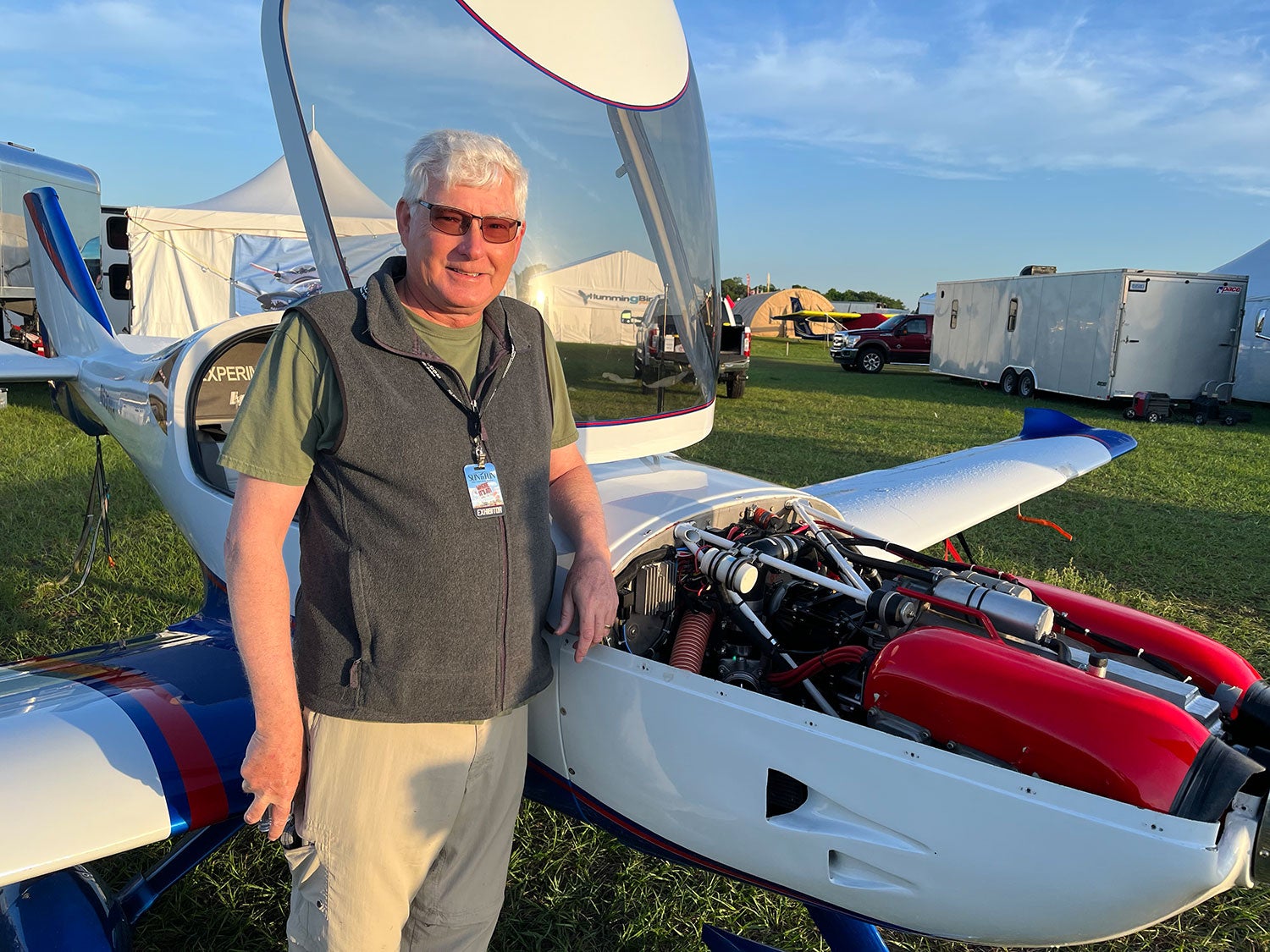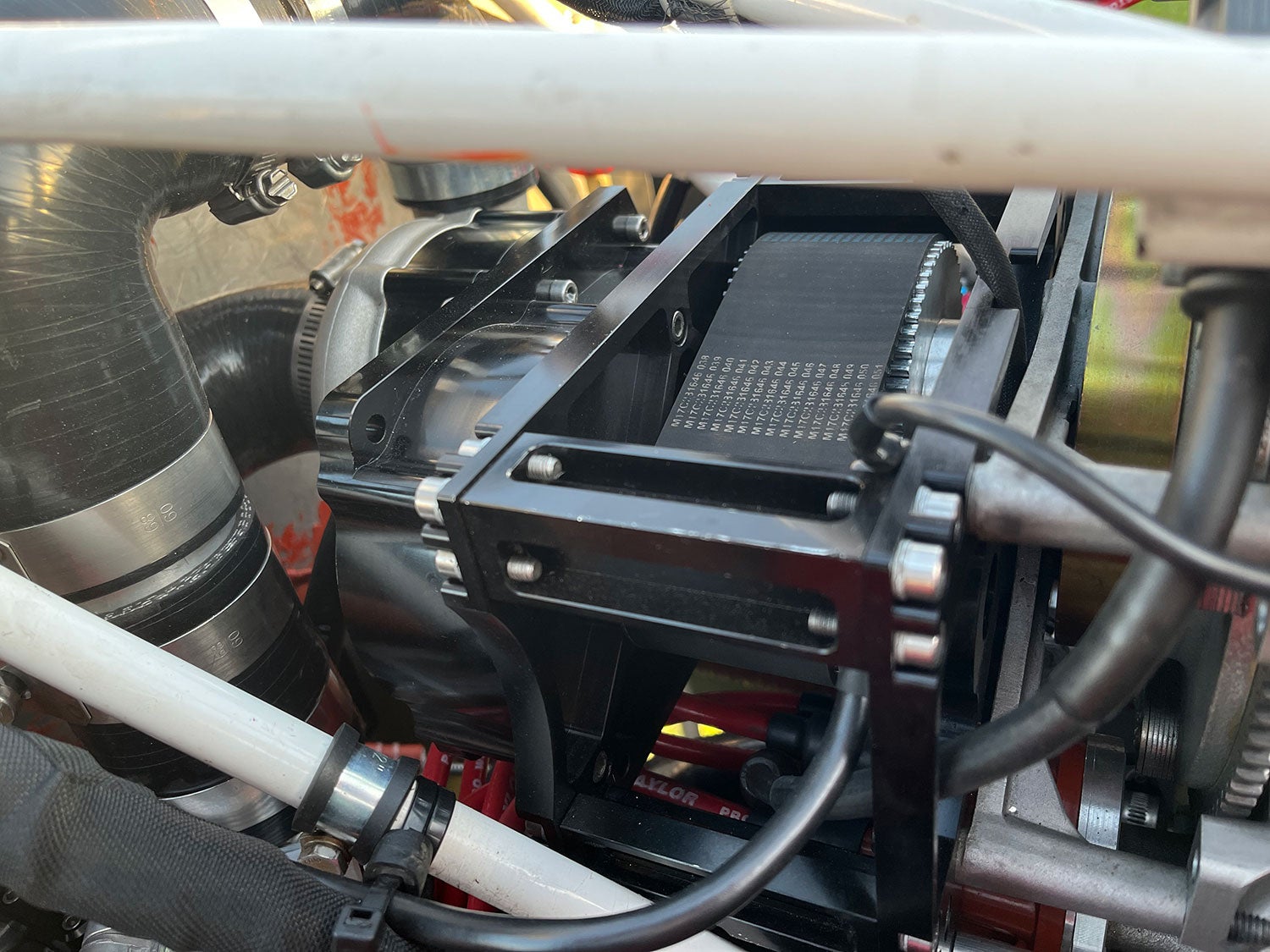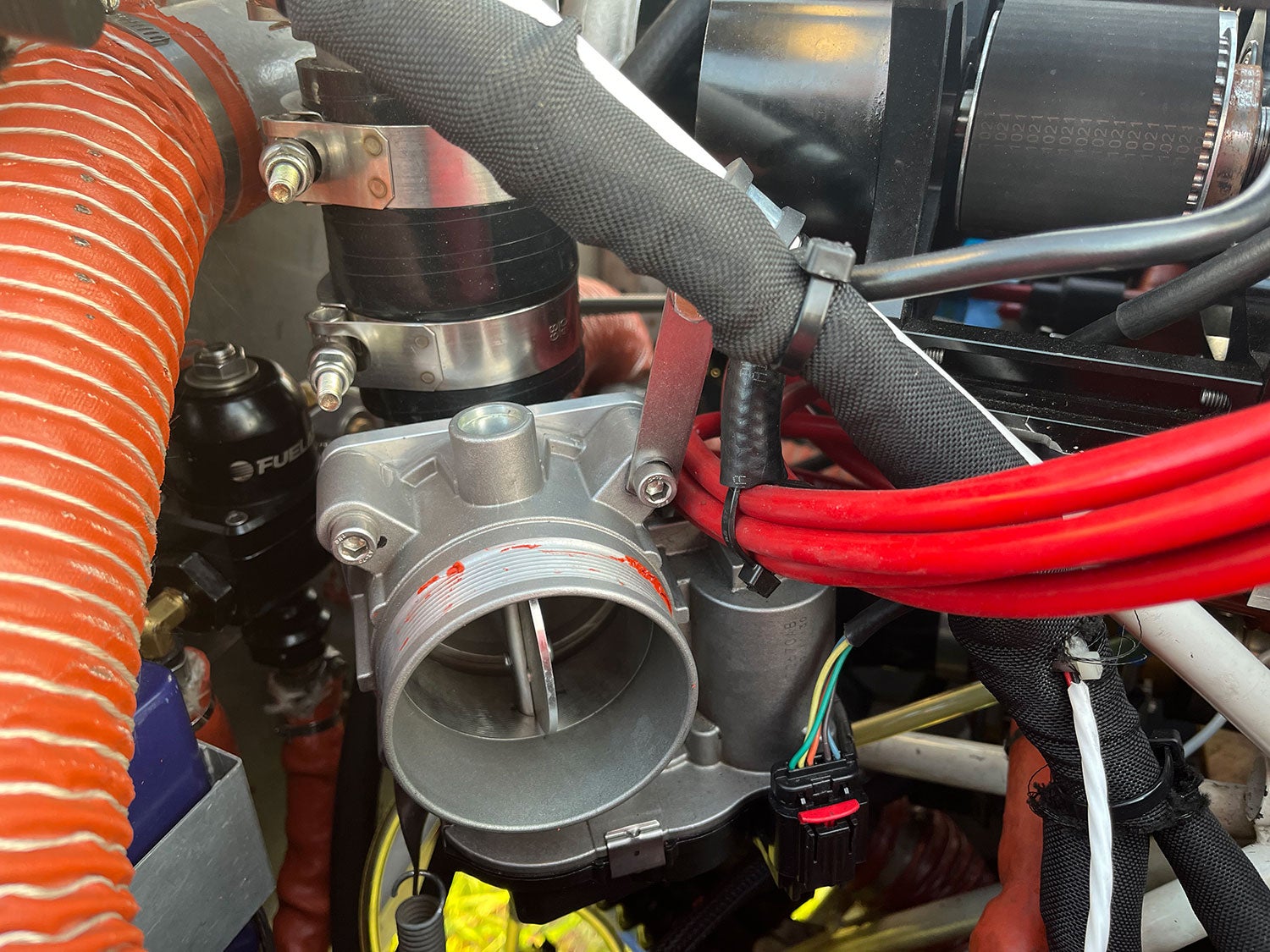
Marc Holcomb, a retired Hughes Aircraft engineer, has developed a supercharger for the popular Jabiru 3300A engine. While the stock 3300 develops about 120 hp takeoff power, the supercharger boosts takeoff hp to 141. However, the real benefit comes in at the system’s sweet spot, between 8,000 and 12,000 feet of altitude. At 10,000 feet, the turbo-normalized supercharged engine is pumping out 114 hp, as opposed to the 80 hp of the normally aspirated 3300.

The secret sauce of this supercharger lies in the computer controlled boost regulator. Marc wrote the software for an Arduino computer that automatically controls the waste gate, keeping boost in check at low altitudes and keeping it steady at higher altitudes.
Marc has used his Arion Lightning as the test bed for his new supercharger. The entire drive unit and boost regulator fits snugly behind the engine, requiring no modification to the test aircraft’s engine mount. At this point, he has recorded a cruise of 172 mph at 10,000 feet, a 20% increase over the normally aspirated ship.

Experimentation continues. Marc has even more boost to give, but the current prop cannot keep up. Using data from his Airmaster electrically controlled constant speed prop, he is working with Airmaster to see if more prop will better harness the increased power. Marc will also be strapping on an oxygen mask to see how high the Lightning will climb with its efficiently controlled boost.
Once testing is completed, the supercharger will be marketed through Geronimo Experimental Aircraft of Mariana, Arizona. You can find more information at geronimoeabc.com.














Thanks for the article on the supercharged engine. I myself experimented with this and built a half VW engine that used a SAAB turbo charger to up the hp from 24 to fifty on 7 lbs of boost pressure. This flew a Spitfire ultralight aircraft. I flew the aircraft at Sun & Fun in 1988 and recieved no press from it whatsoever. It was the first high drag ultralight to fly on a four stroke engine. Guess I was ahead of my time. The company who built the HKS copied what I had done and later came out with their turbo charged engine. The two cylinder turbo charged VW engine was the best idea I came up with and pumped a couple of thousand dollars into the building of it. David Larsen who was a Continental Jet engine mechanic helped me build it. I had plans to use it on my Clipper aircraft but a divorce wreaked my life and that never came about. But using a turbo charger is the best way to improve performance. But now as an inventor, I have come up with a new method of creating a highly charged water that in which a gallon of this water only requires 5 percent gasoline to run a 4 stroke engine. It could be a game changer in the usage of gasoline fuel., Especially now that gasoline is a higher cost. I will provide vedio of this engine running if you care to see it someday.
I really like your turbo implementation.
I believe it makes more horsepower per pound than supercharging, but have always been puzzled about how to get rid of the tremendous amount of added heat here in Arizona.
David Stricker – I recommend the books “Maximum Boost” and “Supercharging” by Corky Bell and published by Robert Bentley. They are from the automotive perspective but the author has designed and manufactured commercial forced-induction kits.
Kim, can you tell us more about your new fuel please ?